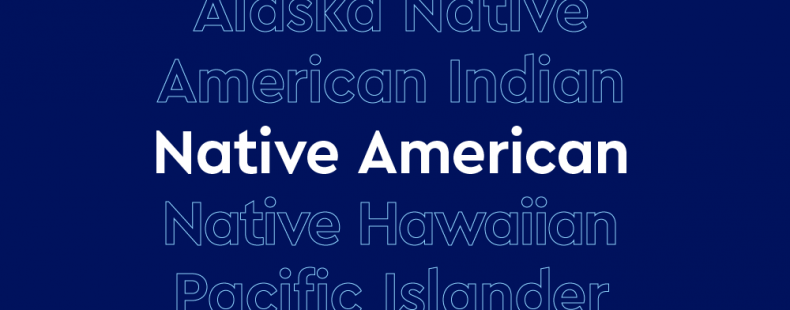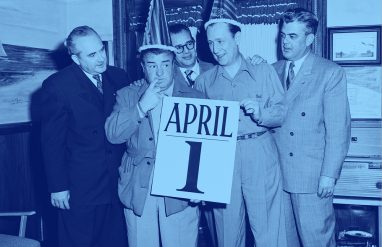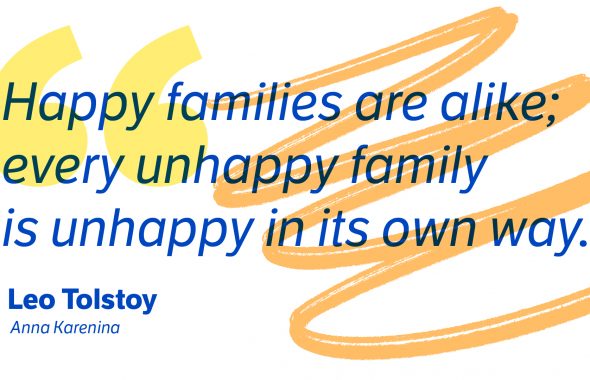November is Native American Heritage Month, a monthlong observance dedicated to celebrating, honoring, and learning about Native American heritage and culture and its diversity.
Recognition and preservation of such heritage is particularly important given the history of Indigenous Peoples in North America and their continued efforts to preserve their rich cultures—despite the many acts of genocide, systemic oppression, and erasure they have been targeted with since the start of white European colonization of the Americas in the late 1400s.
One of the more insidious ways Native American Peoples get erased—in history and in culture—is that many non-Indigenous people don’t know (or don’t consider) what Native American individuals prefer to be called. Despite the broad use of general terms like Native American, many individuals prefer the name of their specific tribe or nation.
In this article, we’ll explore Native American heritage in terms of tribal names, languages, and cultural practices, answering these questions and others:
- Which is the preferred term—Native American, American Indian, or something else?
- Is Native American capitalized?
- What are the major Native American tribes and groups?
- What are the major Native American languages and language groups?
- What English words originated in Native American languages?
🔑Key takeaway
Native American heritage encompasses a vast diversity of Peoples and cultures. All Native American communities—and all of the individuals in them—have their own distinct, complex identity. In celebrating Native American heritage, it is vital to avoid the tendency to group them together in ways that ignore these specific identities and cultures.
Native American, Indian, Indigenous, and other names
The many different Indigenous Peoples in North America have different preferences for the ways they identify—preferences that may be in flux and may even differ from person to person in the same community. Some of the most common general terms are Native American, American Indian, and Indian.
Native American is perhaps the most commonly used general term among and for the Indigenous Peoples of the United States. Despite the historical inaccuracy of the term Indian, some Indigenous people prefer to identify in this way and consider it part of their identity, while others object to its use or simply prefer another term. The word Indigenous is also commonly used.
Indigenous Peoples of Alaska commonly use the term Alaska Natives.
As of the 2020 census, official terms used by the US federal government as identifiers for different Indigenous groups include American Indian, Alaska Native, Native Hawaiian, and Pacific Islander.
In all cases, many people also use—or prefer to primarily identify themselves with—more specific identifiers based on their individual tribe or community.
Is Native American capitalized?
When capitalized, Native American specifically refers to an Indigenous inhabitant of the Americas, especially of the lands that became known as the United States, or a descendant of such people. A person who was simply born in the US could be referred to as a native American, but such use should be avoided due to the likelihood that it will be confused with the capitalized sense of the term.
Major Native American tribes and groups
There are over 500 Indigenous tribes in the mainland continental United States (574 according to US government statistics) and more than 600 in Canada. The following list is not comprehensive but rather represents some of the major (in terms of population) North American tribes.
It is important to remember that there are many, many different Native American tribes and groups. Native American Peoples are not a monolith and even members of the same tribe may identify in different ways or have different cultural traditions depending on their own personal or family history or preferences.
Cherokee: The name Cherokee can refer to three different tribes whose members now primarily live in Oklahoma and North Carolina: the Cherokee Nation, the United Keetoowah Band of Cherokee Indians, and the Eastern Band of Cherokee Indians. The name Cherokee is actually derived from the language of a completely different tribe, the Muscogee/Creek. Cherokee people may refer to themselves as Cherokee or use the word Tsalagi, which is also the word they use to refer to their language. Members of the United Keetoowah Band often refer to themselves as Keetowahs.
Navajo: The Navajo Nation consists of more than 100 communities in the states of Utah, Arizona, and New Mexico. The name Navajo is thought to have been given to this tribe by Spanish settlers. The Navajo refer to themselves as Diné, which means “the people” and is also used as the name of their language.
Choctaw: The Choctaw Nation is based in Oklahoma. The name may come from the word chahta, which is used by Choctaw people to refer to themselves and their language (also called Chahta Anumpa). In Choctaw tradition, Chahta is also the name of a legendary hero said to have founded the original Choctaw tribe.
Blackfoot: The name Blackfoot collectively refers to the tribes of the Blackfeet Nation in Montana and the Blackfoot Confederacy in Canada, which consists of the nations of the Kainai (or Kainaiwa or Blood Tribe), Piikani, and Siksika. “Blackfoot” is the literal translation of the word siksíka (as in the Siksika nation). Members of the Blackfoot tribe may refer to themselves as Blackfoot, Siksikaitsitapi (which translates as “Blackfoot-speaking real people”) or may prefer to use the name of their specific band or community.
Muscogee/Creek: The Muscogee Nation is based in Oklahoma. The term Muscogee is said to come from the name Maskoke, which was the name of a specific tribe. This confederacy of tribes was referred to as the Creek by British settlers, possibly due to the large number of rivers and water in their land. The Muscogee Nation officially dropped the word Creek from their name in 2021, though some members may still prefer to use the term or a combination of terms.
Iroquois: The Iroquois are not one tribe. The name refers to the Haudenosaunee Confederacy, also known as the Six Nations Confederacy, which consists of six tribes: Mohawk, Oneida, Onondaga, Cayuga, Seneca, and Tuscarora. The word Haudenosaunee means “people of the longhouse.” While the US government and others often use the name Iroquois to refer to tribe members of the confederacy, the people themselves often prefer to use the name Haudenosaunee or the name of their own specific tribe or community.
Chippewa: The terms Chippewa, Ojibwa, Ojibwe, and Ojibway are names used to refer to a large tribe whose members are primarily based around Lakes Huron and Superior in the US and Canada. Members of this tribe refer to themselves as Anishinaabeg or Anishinaabe, which means “the original people.” The name Anishinaabe is also used by many other tribes who all consider themselves to be culturally and linguistically related, including the Ottawa, the Potawatomi, and the Salteaux.
Apache: The name Apache is used to refer to many tribes based in the Southwestern US and parts of Mexico. The word Apache may be based on a word from the language of the Zuni people meaning “enemy.” The many Apache tribes consider themselves different nations of the same people. Some tribes speak different languages or have different cultures. Members may identify as Apache, but also often refer to themselves with terms that mean “the people” in their own languages. Such terms include Nde, Tinde, Dine’e, and Inde. Apache tribes include the Apache Tribe of Oklahoma, the White Mountain Apache Tribe, and the Yavapai-Apache Nation.
Pueblo: Like Apache, the name Pueblo is used to refer to a large number of tribes, primarily based in New Mexico, Arizona, and Texas, that share a common ancestry and have similar cultures. Pueblo is a Spanish word meaning “town” or “village.” The different Pueblo peoples consider themselves different nations of one people. At least six different language families are spoken by members of the different tribes. Some members identify as Pueblo, and many may also refer to themselves using words from their own languages. For example, the Zuni people refer to themselves as A:shiwi. Pueblo tribes include the Cochiti, the Sandia, the Taos, and the Zia.
Chickasaw: The Chickasaw Nation is based in Oklahoma. The name Chickasaw is thought to be based on the word Chikasha, which the Chickasaw use in their language to refer to themselves. The Chickasaw share a heritage with the Choctaw people, and their two languages are very similar. According to Chickasaw legends, Chiksa’ was the name of the founder of the tribe and brother of Chahta, the hero from the story of the founding of the Choctaw.
Dakota, Nakota, and Lakota: The Dakota, Nakota, and Lakota are three major divisions of the tribe sometimes known as the Sioux or the Great Sioux Nation, which is based in the Great Plains, especially South Dakota. The tribes themselves refer to this organization system as Oceti Sakowin, which means “Seven Council Fires.” This system organizes the many Great Plains tribes into three major divisions, based on which dialect of the shared language the particular tribe speaks. The Dakota, Nakota, and Lakota are further divided into different tribal bands. Most tribe members prefer these names over the word Sioux, which was adapted by French settlers from a Chippewa term meaning “enemy” or “little snakes.”
Native American languages and language groups
There are hundreds of Native American languages spoken today. Many of them are spoken by only a very small number of people. Historically, and still today, many Indigenous groups are referred to by the language that they speak. Often, groups will even use the same word to refer to both their tribe and their language, evidence of the strong connection between language and identity. Some of the languages are closely related, but some are not—and not all of the languages belong to the same language family. The following list includes some of the major Native American language families, but it is not comprehensive.
- Algonquian: This language family includes the languages of the Algonquin, Cheyenne, Cree, Kickapoo, Chippewa, Ottawa, and Shawnee.
- Athabaskan: This language family includes the languages of the Apache and Navajo.
- Aleut: This language family consists of the languages spoken by Native Alaskan peoples, such as Yupik, Aleut, and the Inuit languages.
- Iriquoian: This language family includes the language of the Cherokee (Tsalagi) as well as the languages of the Six Nations tribes: Mohawk, Oneida, Onondaga, Cayuga, Seneca, and Tuscarora.
- Mayan: This language family includes the languages spoken by Indigenous peoples of southern Mexico. Some examples include Itza and Tzeltal.
- Muskogean: This language family consists of the languages of the Alabama, Chickasaw, Choctaw, and Muscogee/Creek peoples.
- Siouan: This language family includes the languages of the Indigenous Peoples of the Great Plains, including those sometimes collectively known as the Great Sioux Nation or the Sioux. Crow, Catawba, and the Dakotan languages are members of this family.
- Uto-Aztecan: This language family consists of languages spoken by peoples of the southwestern US and Mexico. Some examples include Nahuatl, Comanche, and Hopi.
Many words from Nahuatl have been adopted into English … learn about a few of them here.
Native American words borrowed into English
A great many place names in the US and Canada derive from Indigenous words. In addition to that, many commonly used English words originated in Native American languages. Here are some examples of everyday terms with Indigenous roots.
- chipmunk: from the Ojibwa word ačitamo, which referred to the American red squirrel
- moose: from the Eastern Abenaki mos
- opossum: from the Virginia Algonquian opassom
- skunk: from Algonquian roots that yield such descendants as the Meskwaki shekâkwa
- raccoon: from the Virginia Algonquian aroughcun
- squash (the vegetable/fruit): from the Narragansett askútasquash
- sequoia: named after Sequoya, a Cherokee scholar who developed a system of writing the Cherokee language
- kayak: from the Inuit qayaq
- igloo: from the Inuit iglu
- toboggan: from the Maliseet-Passamaquoddy tʰapákən or the Micmac topaĝan
- bayou: from the Choctaw bayuk
Test yourself on other words that come from Native American languages.
Other aspects of Native American heritage
The diversity of Native American Peoples and languages is matched by the diversity of their cultures. Just as they have with their languages, the many Native American tribes have strived to preserve these cultures in the face of centuries of systematic actions by colonizers and governments to “assimilate” or erase them.
When it comes to food, Native American culinary customs have in common a traditional focus on ingredients found in the wild on the tribe’s lands. Abundant foods like corn, squash, and beans are common, but each community has its own dishes and methods of preparation shaped by the local land and conditions.
In terms of religion and spiritual practices, Native Americans do not all share one religion, with a great diversity of unique spiritual practices observed among different tribes. Still, there are some commonalities among many of them, such as an emphasis on the importance of nature.
Many Native American tribes hold a variety of spiritual and healing ceremonies, which are often considered sacred events only to be attended by members of the tribe. Other events are open to outsiders (including sometimes those known by the widely recognized term powwow) and often feature many aspects of Native American culture, such as traditional dances, music, foods, crafts, and storytelling.
In many cases, the passing down of important traditions, ceremonies, and other cultural practices is based on stories and oral communication—another reason why preservation and celebration of Native American heritage remains important.














